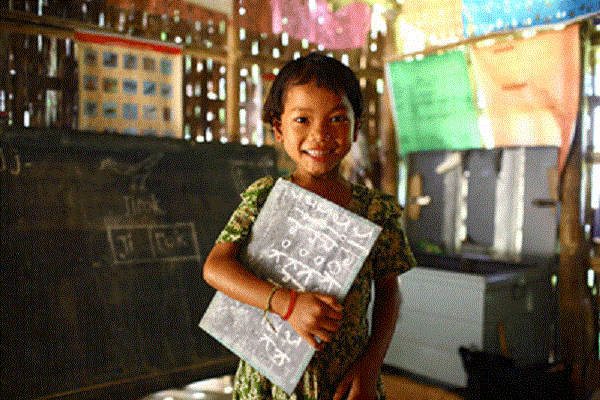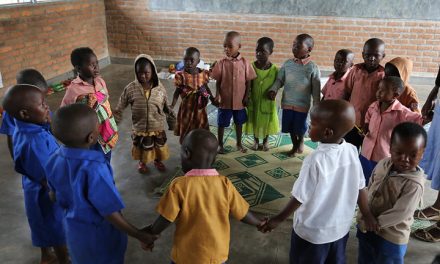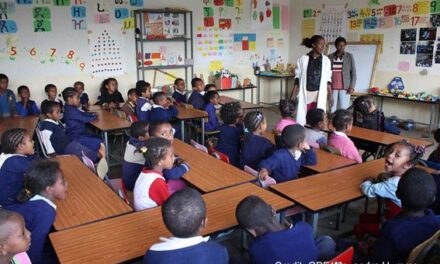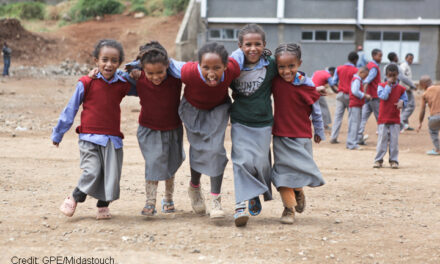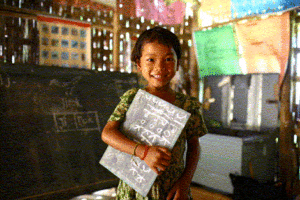
Children in Bangladesh’s Chittagong Hill Tracts are learning to read and write their own language for the first time in preschools supported by Save the Children.
Photo credit: GMB Akash/Panos
Language of instruction can be frustrating. The evidence says children learn based on what’s familiar to them. This ideally means teaching in children’s mother tongue, and at worst teaching in a language frequently used in children’s lives. Poor rural children, exposed mainly to local language, need to be taught through local language. However, an estimated 200 million children in multilingual countries are taught in an international, national or regional language which they don’t use at home, and which many can’t understand beyond a very basic level. It’s hard to believe that parents and governments put up with such a waste of time and effort. Yet decision makers often resist improvements to school language, citing political and financial obstacles.
Education advisers like me, working on programmes in low-income multilingual countries, can end up quiet in the face of resistance. When learning outcomes are low, I find myself muttering, “things might have turned out better if we’d taught the kids in a language they understood!” So can experts take a more constructive approach where children aren’t familiar with the language of instruction?
Seeking out and sharing the large body of evidence on how to shift towards teaching in familiar languages is a vital first step. But a purely evidence-based approach doesn’t always work. If it did, more countries would have moved to mother tongue-based multilingual education systems, based on over 50 years of research data.
It can help to recognise that an inclusive approach to language in education may trigger fears about competition. Language can be a tool to deny other people educational success. If my children already speak the language of instruction and other children don’t, my children are at a huge advantage. If I’m an education official from a group which uses English or the national language at home, I have no immediate incentive to support change.
Longer-term incentives are the national stability and economic growth which come from expanding learning for all. Recognising this can be hard when education has previously worked to select administrators or leaders, rather than giving everyone the range of skills a country needs to shift economic and social gear. Bringing everyone into education means reshaping schools so they work for everyone. Getting decision makers to see that school language is central to these efforts can help justify investment in local-language teaching.
Experts should also focus on the mechanics of teaching children the other languages they need. International, national and regional languages are crucial to the future of most low and middle income countries. Older models of education, exported from colonial countries, don’t build on the language skills people use outside school. Education programmes should help primary school teachers teach second languages, building on children’s everyday linguistic interactions. We should be developing teacher training modules to strengthen children’s first and second language skills, and pushing for better supply of relevant reading materials in multiple languages. Perhaps then we can reassure ourselves that we are helping to stop school language laying waste to children’s education.

